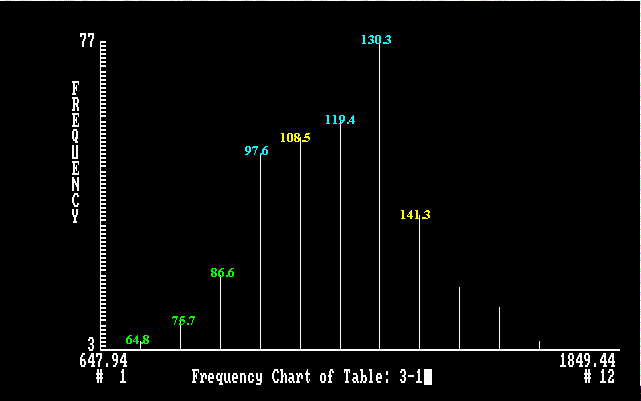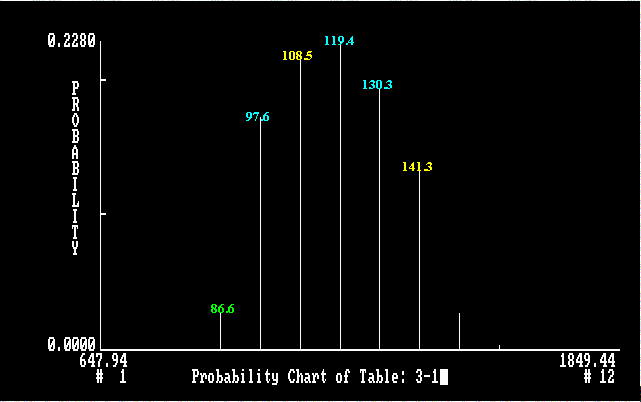Sunday June 10, 2012
HK 16 : Monthly Cycle Charts
Monthly Cycle Directional Indicator :
86.7 - 91.1 - 95.0 -
[97.5] -
The current subscription rate is US$400 per month for each pair or US$1,000 for 3 months. This would include daily, weekly and monthly cycle analyses. Contact Albert Cheung at qindex@gmail.com for details in payment or pay through PayPal system if you just order 1 or 2 items.
Monthly Cycle Directional Indicator : ... 75.7* - 81.2 - 86.6* ... 92.1 - 97.6* - 103.0 - 105.7 // 108.5* - 111.2 - 113.9 - 116.7 - 119.4* - 122.1 - [124.9] - 127.6 - 130.3* - 133.0 - 135.8 - 138.5 - 141.2* // 144.0 - 146.7 - 152.1* - 157.6 ...
Monthly Cycle Congested Area : 68.7 - 87.4 - (106.1* - 124.9*) - 143.6 - 162.3 - 181.0
Normal Lower Limits : 92.1* - 99.5 - 102.0
Lower Mid-Point References : 108.5* - 113.0 - 114.0
Monthly Cycle Pivot Centers : 124.9* - 125.9 - 126.6
Upper Mid-Point References : 137.9 - 140.1 - 141.2*
Normal Upper Limits : 149.8 - 153.6 - 157.6*
![]()

Monthly Cycle Frequency Chart of HK : 16

Monthly Cycle Probability Chart of HK : 16
Long Term References for Position Traders
Monthly Cycle Reference / Normal Lower Limits : [49.1] - 61.9 - [67.9] - 68.5 - [69.7] - 72.6 - 70.8 - 77.6 - 81.1 - 92.1 - 99.5 - 102.0
Monthly Cycle Reference / Normal Upper Limits : 102.6 - 104.7 - 108.8 - [145.8] - 149.8 - [153.0] - 153.6 - [157.0] - 157.6 - 178.4 - 185.1 - 194.3
Remarks : The lower and upper limits are good reference for the next three to six months. Significant levels are marked with stars. Those levels written in pink colour are derived from the weekly cycle and the rest are obtained from the monthly cycle. Contact Albert Cheung at qindex@hotmail.com for details
![]()
Keys
All significant numbers are marked with a star "*" and they are interrelated and are separated from each other by a constant value or a multiple of the constant value.
The blue color represents the ends of a normal standard projected series and the lower and upper barrier of the projected series are marked with xx.xx // xx.xx.
The center of the projected series is marked with pink color together with the symbol [xx.xx] and it is also the mid-point reference of two significant numbers.
Other mid-point reference of two significant numbers are marked with green color without a star.
The orange color is the mid-point reference between the significant number and the number marked with green color.
Keys :
Blue = Resistant/Supporting Point within the Normal Trading Range
Green = Resistant/Supporting Point outside the Normal Trading Range
Yellow = Initial Upside/Downside Targeting Points
Introduction
The Quantum Index Analysis is a new technical technique that I developed 13 years ago. This technique is used to forecast the movement of currency rates, prices in bonds, stocks and commodities. Using this system I provided exclusive service (USD/DEM, USD/JPY, USD/CHF and GBP/USD) to the Strategic Positioning Unit of Citibank in Hong Kong for two years (1988 - 1990). The URL of my website is http://www.qindex.com
General Principle of Quantum Index Analysis (QIA)
QIA is a pc-based trading system which forecasts short term market movements on a daily, weekly or monthly basis. The system specifies projected chart points for a defined time frame (i.e. daily, weekly and monthly) and determines the ease of movement between these points. These projected chart points represent positions where one would expect market resistance or supporting force. Accurate determination of the position of these projected chart points is very important for traders to decide their entry and exit points. QIA is an ideal system for traders because it can predict the market direction and the high and low for a defined period.
The QIA System
Cycle Analysis
Daily closing data are used to generate the daily cycle charts. For currency rates, the reference point is 22.00 GMT. In weekly and monthly cycle charts, the immediately preceding weekly and monthly data are used as the basis of analysis. To obtain optimal conditions the last 25 samples are always used to generate the projected profiles. The overall time required to produce a complete set of raw data from a personal computer is generally less than one minute.
Frequency and Probability Charts
QIA generates a bar chart which indicates the ease of movement between projected chart points within a specific time frame. The system determines a projected range and produces a number of bars with a constant increment to cover this range in a chart. The bars are arranged in ascending order along x-axis. A value, frequency (y-axis), is assigned to each bar. The difference in frequency value of two adjacent bars indicates the ease with which the market is likely to move between them : the smaller the difference, the easier the movement, and vice versa. The system also assigns a probability value (y-axis) to each bar. The probability value measures the pull exerted by each bar on the market. The distance between any bar and the market position is a function of its pulling ability. The projected chart point adjacent to the market position is the projected chart point that is most likely to influence the way the market moves.
Normal Trading Range
Only the middle session of the projected profile is considered as the normal trading range. The width of the middle session is determined by half the height of the projected profile in the frequency chart. In general the market has 80% chance of closing within the normal trading range. If the market is trading outside the normal trading range, it is used as an early indication that the market is changing its rhythm.
Projected Chart Points
These are positions where one would expect the market to face resistance or supporting force. They are located at the tops of the projected profile. In the QIA system we try to generate a set of four to five projected chart points within the normal trading range. The projected chart points act like a super magnets. Occasionally, we also take note of those positions at the bottom of the projected profiles. They act like an equilibrium between two projected chart points. The likelihood of seeing a particular rate or price reached during any projected period is measured by a combination of two factors: the contour of the frequency chart and the probability value.
The Critical Point
This is a projected chart point positioning at the center position of the projected profile. Usually it has the highest frequency number and the highest probability value. Occasionally this is a set of two different projected chart points located adjacent to each other. I would label it as the "critical level". When the market is undecided, it has a tendency to move around the critical point with a magnitude of plus and minus one adjacent bar in the projected profile. When the market gathers enough momentum to move upward, it will move away from the critical level and head for the next projected chart point on the right hand side of the projected profile. The market has a tendency to stop at the upper limit of the normal trading range. When the market loses its momentum, it will reverse its course and pull back towards the critical level. On the other hand when the market builds up enough selling pressure, it will move away from the critical point and head for the next projected chart point on the left hand side of the projected profile. If there is constant selling pressure, the market will stay at the lower end but within the normal trading range until the end of the cycle.
Trading Strategy Using QIA
Market Rhythm
It is very important for a trader to determine the market rhythm first because it has a bearing on how the daily, weekly, monthly or quarterly charts would be used. If the market is very volatile, one should concentrate on the weekly and monthly charts. Daily cycle charts can then be used for fine tuning for exit or entry. 70% - 80% of the time, most market movements can be described by the daily and weekly cycle charts. In the QIA system all my projected chart points are interrelated and are separated by a multiple of a constant which is represented by an equal increment between bars in the charts. Projected chart points are positioned at the tops of a projected profile. One can easily fine tune the system engine to produce a set of points closely correlate to the position of high, low and closing prices. We can also sacrifice accuracy to a certain extent to generate a set of 3 to 4 significant chart points.
Trading Outside the Normal Range
When the market breaks through the daily cycle's normal trading range, weekly and monthly cycle charts should be used as reference. If the market is trading outside the weekly cycle's normal trading range, it is a warning signal for a trending market. In a strong trending market, 5-day and 22-day cycle charts will be used in addition to the daily, weekly and monthly charts.
Oversold and Overbought Condition
Under extreme circumstances the system will fail to generate the probability chart. Such a market condition is then defined as oversold or overbought. There is a great uncertainty but the market will have a very high tendency to reverse its course.
Pattern Recognition
The distribution of the bars in the projected profile offers some insight into the market movement. A projected profile with several prominent peaks would suggest a range trading market. On the other hand a projected profile with only one symmetrical peak would indicate that a trending market is developing.
Determination of entry/exit points
The odd is in one's favor if entry or exit points are positioned at the extreme end of the normal trading range of the daily or weekly cycle charts or in the vicinity of a projected chart point in the monthly chart. There is less than 20% - 30% chance for the market to close outside the weekly and daily cycle's normal trading range
Stop loss placement
The stop loss level should be placed at 1 - 2 bars away from the entry point. Entry or exit points should be positioned in the vicinity of projected chart points in the weekly or monthly cycle charts. The market has a 70% - 80% chance of closing within the normal trading range in the daily and weekly cycles. When a new position is opened, the projected profit and loss ratio should always be maintained at a value of greater than 1.5.
All rights reserved. I assume no responsibility for any error and am not liable for any damage that may result from the use of this information. The forecasts are based on quantum index analysis system that I have developed and may or may not predict the market movement accurately.
![Live 24 hours gold chart [Kitco Inc.]](http://www.kitco.com/images/live/gold.gif)